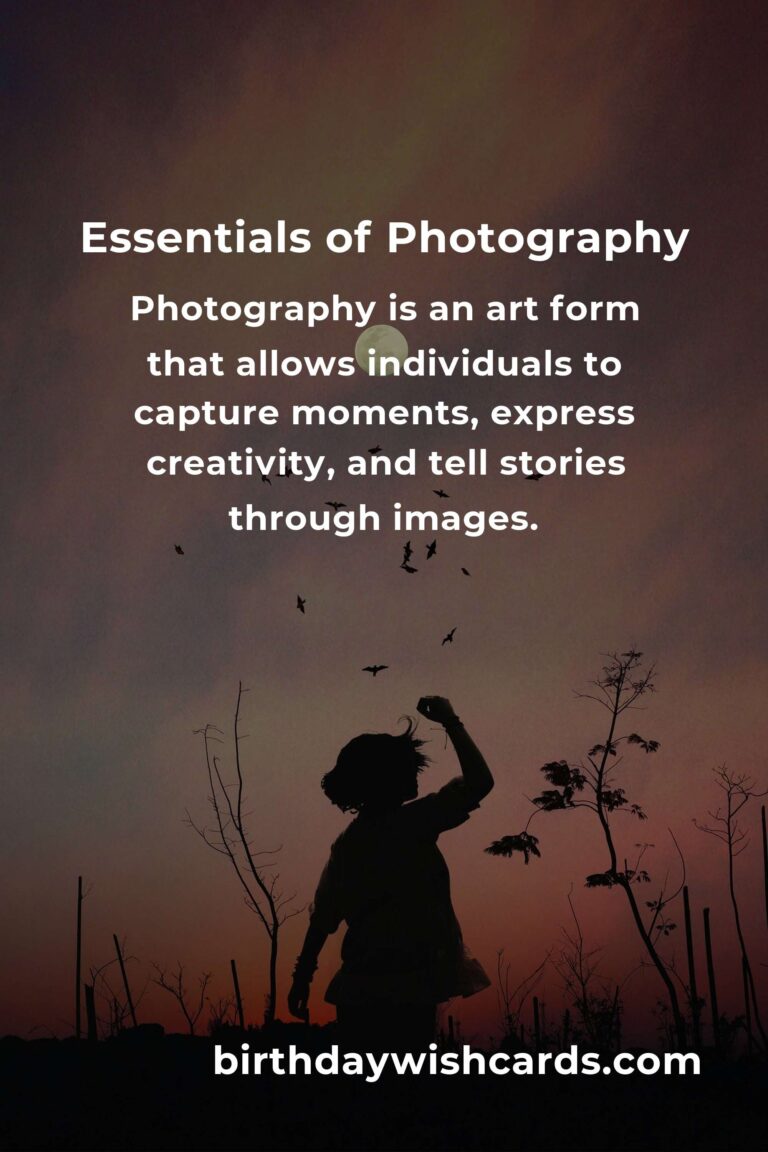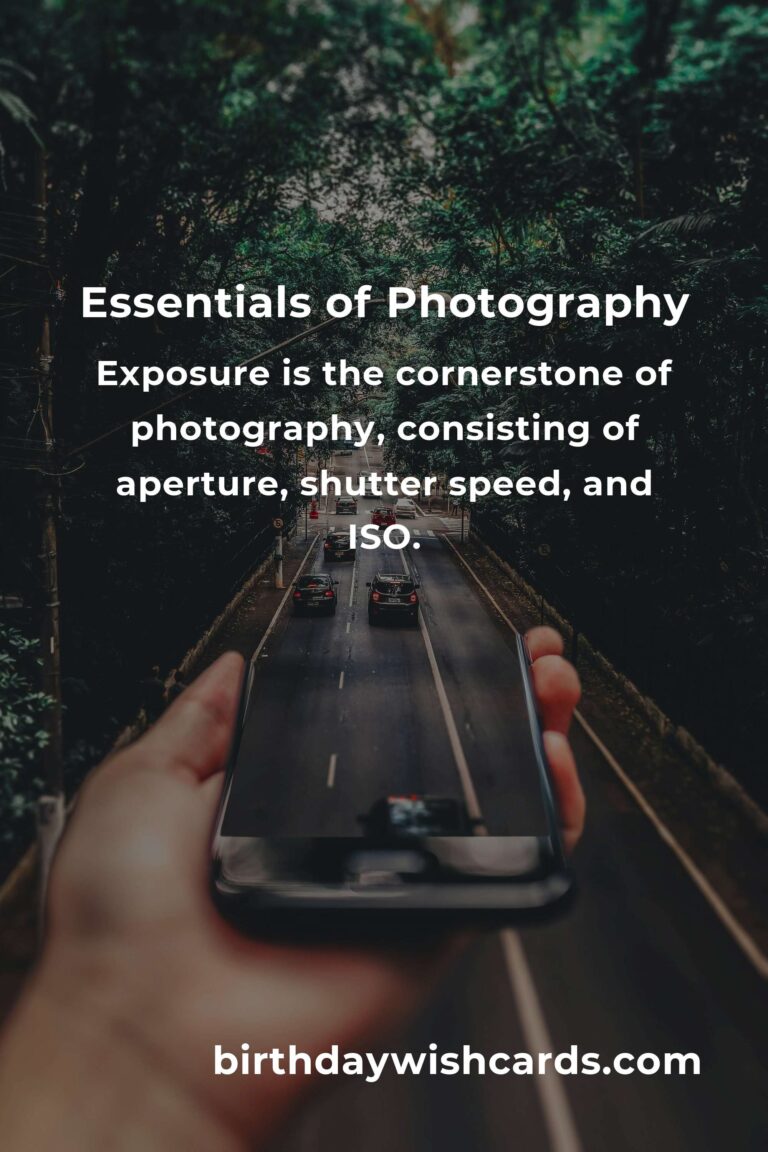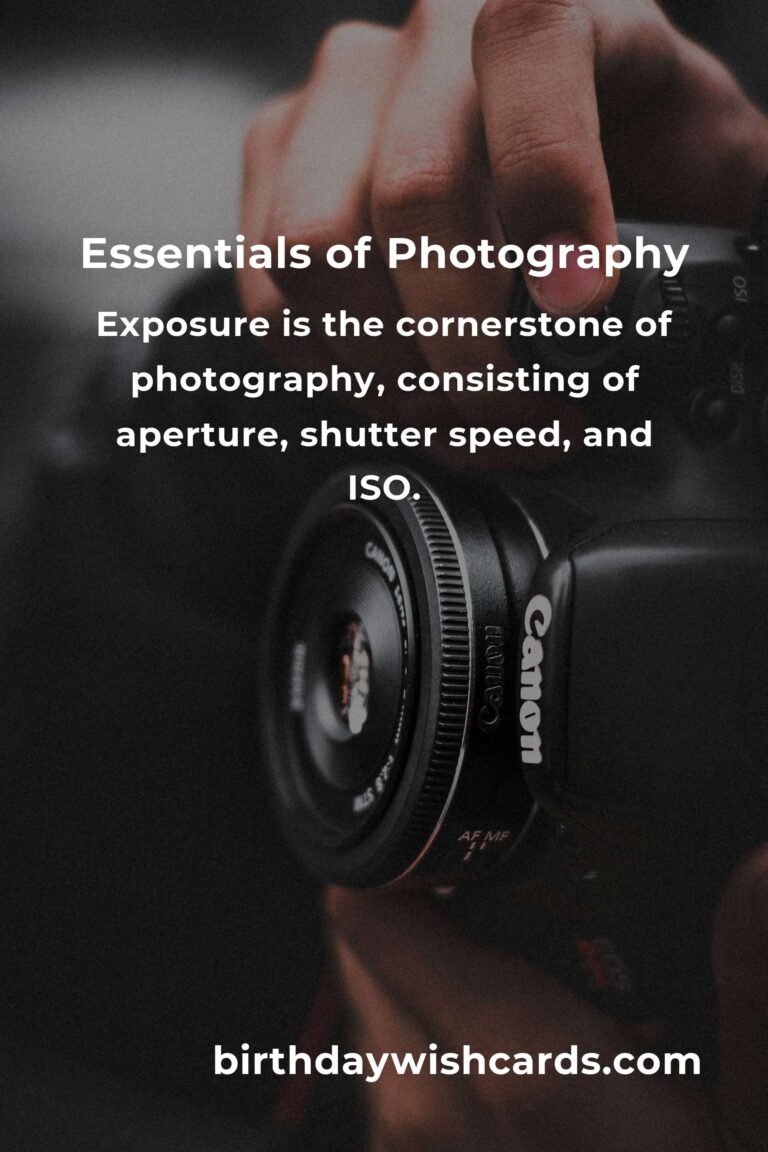
Photography is an art form that allows individuals to capture moments, express creativity, and tell stories through images. Whether you’re a beginner or an amateur looking to hone your skills, understanding the fundamentals of photography is crucial. This guide aims to provide you with practical insights into photography basics that will help you improve your craft.
Understanding Exposure
Exposure is the cornerstone of photography. It refers to how much light reaches your camera’s sensor or film. The key components of exposure are aperture, shutter speed, and ISO. Balancing these three elements is essential for capturing well-exposed photos.
Aperture
Aperture is the opening in a lens through which light enters the camera. It’s measured in f-stops, such as f/1.8, f/2.8, and f/4. A lower f-stop means a larger aperture, allowing more light and creating a shallow depth of field. This is ideal for portrait photography where you want the subject to stand out against a blurred background. Conversely, a higher f-stop provides a smaller aperture, which is suitable for landscape photography, ensuring everything from the foreground to the background is in focus.
Shutter Speed
Shutter speed determines how long the camera’s shutter remains open to let light in. It’s measured in seconds or fractions of a second, such as 1/500s, 1/250s, or 1/30s. Faster shutter speeds freeze motion, crucial for action photography, whereas slower speeds can create motion blur for artistic effects or low-light conditions.
ISO
ISO measures the sensitivity of your camera’s sensor to light. A lower ISO value, like 100 or 200, is ideal for bright conditions, providing high image quality with minimal noise. In contrast, a higher ISO, such as 1600 or 3200, is suitable for low-light scenarios but may introduce graininess or noise to the image.
Composition Techniques
Composition is about arranging elements within a frame to create a visually appealing photograph. Mastering composition techniques can greatly enhance the impact of your images.
Rule of Thirds
The rule of thirds involves dividing your frame into a 3×3 grid and placing key elements along these lines or at their intersections. This technique helps create balance and interest in the image.
Leading Lines
Leading lines are paths within an image that guide the viewer’s eye towards the main subject. These can be roads, rivers, or even shadows that draw attention to your focal point.
Framing
Framing involves using elements within the scene, such as windows or branches, to create a ‘frame’ around the subject. This adds depth and context to the photograph.
Lighting in Photography
Lighting is a critical element in photography, affecting the mood, tone, and clarity of an image. Understanding how to work with natural and artificial light is key to capturing stunning photographs.
Natural Light
Natural light, such as sunlight, can create beautiful, dynamic images. The golden hour, which occurs shortly after sunrise or before sunset, provides soft, warm lighting that is ideal for portraits and landscapes.
Artificial Light
Artificial lighting, including flash or studio lights, offers control over the light’s intensity and direction. Mastering artificial lighting allows you to shoot in any environment and create desired effects.
Post-Processing Basics
Post-processing is the digital editing of images to enhance their quality and impact. Understanding basic editing techniques can help refine your photographs to their full potential.
Adjusting Exposure
Post-processing software like Adobe Lightroom or Photoshop allows you to adjust exposure settings, including brightness and contrast, to enhance your images.
Color Correction
Color correction involves adjusting the colors in your image to make them more accurate and vibrant. This can be achieved through tools like white balance and saturation adjustments.
Cropping and Resizing
Cropping removes unwanted areas from a photo, improving composition and focus on the subject. Resizing ensures your image is suitable for various formats, such as print or web.
Practical Tips for Beginners
If you’re new to photography, here are some practical tips to help you get started:
Practice Regularly
Like any skill, photography improves with practice. Take your camera everywhere and experiment with different settings and compositions.
Learn from Others
Join photography groups or online communities to share your work, get feedback, and learn from experienced photographers.
Stay Curious
Photography is a lifelong learning journey. Keep exploring new techniques, styles, and subjects to continually improve your skills.
By mastering these practical photography fundamentals, you’ll be well on your way to capturing stunning images that convey your unique perspective and creativity.
Photography is an art form that allows individuals to capture moments, express creativity, and tell stories through images. Exposure is the cornerstone of photography, consisting of aperture, shutter speed, and ISO. Composition techniques like the rule of thirds, leading lines, and framing can enhance the impact of your images. Lighting is a critical element in photography, affecting the mood, tone, and clarity of an image. Post-processing is the digital editing of images to enhance their quality and impact.
#PhotographyBasics #Exposure #Composition #Lighting #PostProcessing













